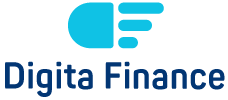Digital financial literacy is becoming an essential skill in the modern workplace. It’s no longer just a nice-to-have, especially for project managers and team members who so often have to make those snap decisions about budgets and resources. If your project is experiencing cost overruns, weak financial planning, or poor transparency, it may be worth investing in digital financial literacy training.
This blog takes a closer look at what digital financial literacy is, why it’s important for project management, and how training in this area can help your organization stay in control of risk and navigate the fast lane to success. We’ll also provide some steps you can use to get started launching a digital financial literacy initiative and resources to actually launch it.
What Is Digital Financial Literacy?
Digital financial capability is the ability to use digital tools and technology to enable individuals to manage their finances with more ease. It includes learning how to write, read, and interpret financial information using software, applications, and online websites. This could include budgeting products, finance software, and financial forecasting solutions.
In 2020, financial competency now extends to understanding technology as more industries become digitized. Whether on the Excel end of the spectrum or on a cloud-based financial management software solution, digital financial literacy ensures we’re all capable of making informed financial decisions in a connected, tech-driven world. While improving digital financial literacy is essential, it’s also worth considering whether digitization could cause the next financial crisis.
Why Is Digital Financial Literacy Important?
Funds form the crux of every venture.” Budgeting, resource management, purchasing resources, and financial reporting all need an understanding of the basic money stuff. Do a bit of math (add up the hourly wages and benefits for laborers, sweepers, and equipment operators), and those backyard-pavement solutions to marooned leaves start to look more expensive than they might appear on the surface. A digital tool doesn’t just modernize those tasks; it can reveal inefficiencies, too, and deliver real-time insights into data. With insufficient literacy, teams can face an inability to meet the financial targets and derail the project or result in expensive errors, or, in a worst-case scenario, the project being killed.
Financial Challenges in Project Management
Even the most skilled project managers will encounter financial hurdles. Digital financial literacy can help address these common challenges:
1. Budget Overruns
One of the most frequent issues in project management is going over budget. Poor planning, inadequate tracking, or lack of visibility into spending can cause costs to spiral out of control.
2. Misaligned Spending and Priorities
When teams are unsure where money is being spent, it often results in funding going to low-priority initiatives instead of the aspects that need immediate attention.
3. Difficulty with Forecasting
Forecasting future financial needs relies on properly analyzing data and trends. Without the skills to use digital tools, this process can feel like guesswork.
4. Limited Transparency
Effective financial reporting ensures stakeholders understand where and why money is being spent. Misinformation or insufficient documentation damages trust and accountability.
How Digital Financial Literacy Training Can Solve These Challenges
Digital financial literacy training can transform how project finances are managed. Here’s how it tackles the above challenges:
Enhanced Budget Management
If you train up your team in tools such as forecasting software or a cloud-based project budget tracker, you can track costs as they come in, mitigating the risk of spending over the odds.” :] For instance, tools such as QuickBooks or Microsoft Dynamics 365 allow for automatic tracking of finances and on-time alerts for budget risks in the early stages.
Data-Driven Forecasting and Planning
With some training, teams can predict financial futures more accurately with data models. Systems such as SAP and Anaplan not merely merge the financials but also makes use of powerful AI-driven predictions that resolves the blind spots.
Improved Reporting and Transparency
Teach your team how to generate and present clear financial reports using tools like Google Data Studio or Tableau. This builds trust among management and stakeholders, showcasing that every dollar spent aligns with strategic goals.
Optimized Spending
Train your team on creating and presenting clean financial reports with programs like Google Data Studio or Tableau. This kind of trust between management and shareholders demonstrates that every dollar of spend is in line with strategic objectives.
Real-World Examples of Projects Succeeding with Digital Financial Literacy
Many organizations have reaped the rewards of prioritizing financial training. Here are two examples:
Case Study 1: Nonprofit Modernizing Budget Allocations
A nonprofit struggling with consistent budget overruns introduced digital financial literacy training to its staff. By equipping employees with budgeting tools and spending dashboards, the nonprofit saved 15% on general expenses within the first six months and redirected the savings toward core mission programs.
Case Study 2: Software Development Startup
A startup company found its early stages hampered by poor financial decision-making, particularly with vendor payments. After implementing financial training focused on digital tools like QuickBooks and Xero, the team eliminated vendor payment errors and improved profitability by 12%.
These examples highlight how organizations across industries and stages of development can benefit from a digitally savvy staff when it comes to project finances.
How to Implement Digital Financial Literacy Training in Your Organization
Implementing new training takes careful planning. Follow these steps to help your team strengthen its digital financial literacy skills:
- Assess Your Team’s Gaps
Survey team members to evaluate current knowledge of basic finance and digital tools. Identify where they may benefit the most from training.
- Select the Right Training Programs
Some popular options include online platforms like Coursera or LinkedIn Learning, which offer courses in financial management and digital tools. Tailor programs to your team’s unique needs.
- Use a Blended Learning Approach
Combine online courses with in-person workshops led by trained financial experts. This ensures your team gets the technical support needed to master digital tools.
- Leverage On-the-Job Practice
Encourage employees to immediately apply their training to real-world financial tasks. Use case studies, role-playing exercises, or gamified simulations to keep engagement high.
- Monitor Progress and Evaluate Success
Track your team’s advancement through progress reports or quizzes. Use KPIs like budget accuracy, timely reporting, and reduced errors to measure the training’s overall impact.
Resources for Getting Started with Digital Financial Literacy Training
If you’re ready to start, here are some helpful resources:
- Coursera & LinkedIn Learning
Offer beginner to advanced financial literacy courses, often covering tools like Excel and QuickBooks.
- Apps and Software Tutorials
Programs like Tableau, FreshBooks, or Zoho offer tutorials and guides to new users.
- Specialized Workshops
Reach out to industry consultants who offer corporate workshops tailored to finance and technology.
Empower Your Projects with Financial Literacy
Digital financial literacy training is not only about numerical knowledge or learning to use new tools. It’s an investment in the long-term success of your projects and team. With the correct training, project managers and their teams can make better decisions, minimize financial risks, and enhance their operations—doing more with certainty.
You can get started today by checking out a free course or by running an internal workshop. A digitally competent team is not just an investment in financial literacy; it’s an investment in the future of your initiatives.








Harnessing AI and Machine Learning for Fraud Detection in Digital Finance
Harnessing AI and Machine Learning: Shaping the Future of Digital Finance
Why Digitization is the Future of Consumer Financial Services
Cybersecurity in Digital Finance: A Guide to Asset Protection
Embedded Finance: How Seamless Financial Services Are Integrating into Everyday Apps
AI-Powered Credit Scoring: Revolutionizing Digital Lending in the Digital Finance Era
Harnessing AI in Digital Finance: Revolutionizing Risk Management and Customer Experience
How Open Banking APIs Are Revolutionizing Digital Finance?